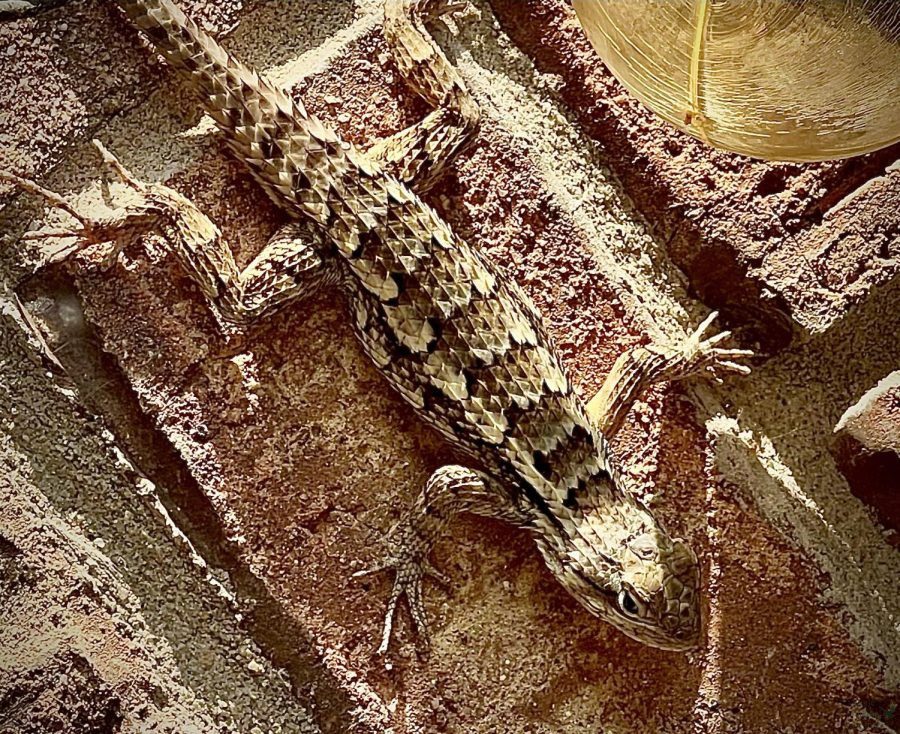Local Reptiles — writer discusses facts, misconceptions
Many reptiles see Prosper as their ideal home. One of the most common reptiles seen within the area is the Mediterranean house gecko. This lizard, interestingly enough, was first spotted in Florida before spreading all across the southern coast of the United States. Eventually, it made its way westwards to North Texas.
September 6, 2022
The Prosper area, along with most of North Texas, is known for its humid subtropical climate. Summers are hot with moisture constantly lingering within the air, and winters are mild with temperatures averaging around the forties. Because of these conditions, many reptiles see Prosper as their ideal home.
One of the most common reptiles seen within the area is the Mediterranean house gecko. This lizard, interestingly enough, was first spotted in Florida before spreading all across the southern coast of the United States. Eventually, it made its way westwards to North Texas.
Although this proves it to be an invasive or introduced species, the Mediterranean geckos have no negative impact on the environment. They peacefully reside within the nooks and crannies of many urban structures, such as homes, buildings, schools and park benches. Their appearance can be described as tan skin littered with small brown bumps, large eyes surrounded by blue-tinted scales and large feet with toes designed to climb walls.
The Texas spiny lizard also lives with us. As implied by the name, this lizard specifically lives in Texas as well as small areas of surrounding states. These reptiles typically prefer an environment filled with an assortment of plants. Because of this, you will most likely find one hidden in a garden or flower bed.
Even though they live within very close proximity to us, no worries should be given to their presence. The least they can do is eat the invasive pests or insects close by. You can identify one on your own by watching out for a lizard with tan, black, brown and white colored scales rotating in a stripped pattern. Another striking feature you can’t miss is of course the spiny and sharp to the touch appearance of their scales.

Moving onto the legless reptile inhabitants of the Prosper area — we have the Texas rat snake. First and foremost this snake is non-venomous, and therefore can cause no significant harm to humans. Although many public health organizations such as the CDC recommended not to make any physical contact with these snakes, there is really nothing to worry about other than a potential but benign bite.
These snakes prefer large grassy areas in which they can hide as well as hunt in, but rarely do they ever purposefully make themselves known to humans unless they feel threatened or unsafe. The appearance of these reptiles consists of light and dark brown scales, resembling a peanut butter and chocolate color scheme. Eyes colored completely black rest within their head along with a forked pink tongue.
The last and most dangerous reptile within this list, is the common copperhead. These snakes are in fact venomous, but can rarely pack a bite that is lethal. In most cases a bite from these snakes will cause temporary tissue damage in the direct location of the bite, and a great amount of pain.
Generally these reptiles gravitate towards wet or damp locations such as the land next to a river or stream, but for these animals to thrive they also seek the cover of nearby trees, bushes, rocks. Some physical features of copperheads are diamond shaped heads with a slightly pointed nose angling upwards. They are light tan in color with brown, auburn colored bands going up and down their body in a stripped manner. The last and smallest detail to notice is their slit-like pupils, a dead giveaway of their venomous nature.
Overall, we have many amazing and unique reptiles in this area, ones that we should take a step back every now and then to admire.




























